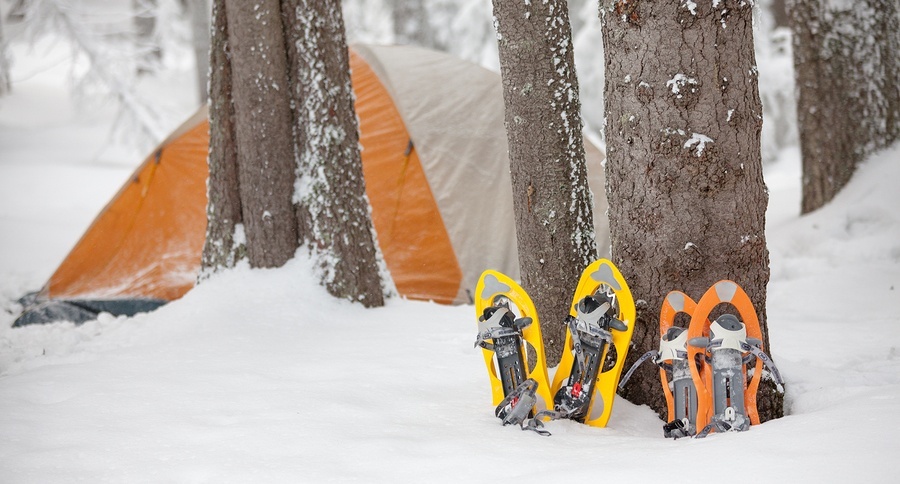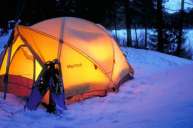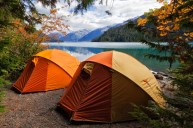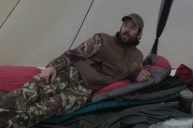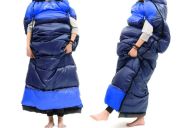Winter camping can be a blast with a little preparation and planning.
It's a safe bet that just about every outdoorsman has enjoyed numerous warm weather camping experiences, both as a practical adjunct to remote hunting or fishing adventures as well as an activity entirely unto itself. But ask those same folks if they've camped in the wilds during the heart of winter, when the average temperature is consistently below freezing. Chances are good that there won't be near as many raised hands in the group.
After all, spending a morning on the ice fishing for perch or kicking brush piles for cottontails in late November is one thing, but who wants to cook dinner outside in the cold or try to sleep overnight shivering in a sleeping bag? The thing is, it doesn't have to be that way. Winter camping can be a lot of fun, even if it is a bit more challenging than summer camping.
Paul Kufahl, owner of Pedal, Paddle, Pack and a winter camping expert, confirms, "Winter camping can be a very rewarding experience, if you're prepared. There are no bugs, very few if any other campers, and even if you are camping in a familiar location the scenery is quite a bit different in winter than it may have been a few months earlier."
Smart planning is vital for a successful and enjoyable winter camping experience. We'll briefly cover three essential winter camping considerations in this article: weather, physical requirements, and gear.
Weather Considerations
Pay attention to weather forecasts, and familiarize yourself with the nuances and variables of changing weather in your area. In the Midwest, for example, locations close to the Great Lakes can be impacted by a condition known as "lake effect," which can turn a moderate forecast into an unexpected full-on blizzard.
Things you might take for granted during the warm weather months take on a different complexion when the thermometer reads 10 or 20 degrees, or colder. Drinking water can freeze, plastic can become brittle, exposed skin can risk frostbite, simple activities like lighting a fire or pitching a tent become more challenging when hands are cold or you're wearing multiple layers of clothing. Paul recounts, "We've had boot lace loops snap off and buckles on backpacks shatter because of the temperature."
Snow and wind are the other two main elements of the winter weather triad that you must account for. Wind can turn a cold but pleasant condition into a painful and unbearable situation. A heavy snowfall can impede your progress while hiking or setting up camp. On the plus side, few things offer as beautiful and peaceful a vista as snow-covered pines or prairie. You can also take advantage of snow's moldable nature to build small snow berms around your campsite to block the wind if you are unable to take advantage of natural wind barriers.
Finally, daylight is at a premium in winter camping. The number of hours of winter daylight can be half of what they are during summer. "The amount of time spent on the trail is decreased and the long nights can often be demoralizing," says Paul.
Fortunately, one of the greatest weapons ever devised to combat demoralization is a campfire and the company of friends. Add a clear, star-filled night sky to the mix and you may just find yourself looking forward to those cold evenings even more than the daytime.
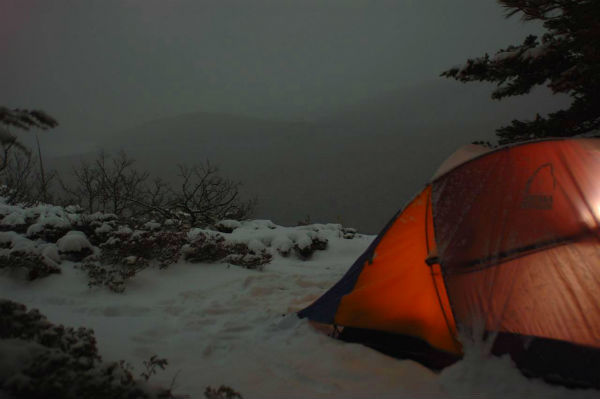
Josh Kufahl
Physical Requirements
Winter hiking and camping generally demands a higher level of fitness than during warm weather. Even if trails and camp locations are familiar you'll likely be wearing more clothes and carrying more gear weight, often in more challenging conditions than during summer excursions. You'll work your body harder and burn more calories, especially if you're getting to your campsite by snowshoe or cross-country skiing.
For example, Paul indicates that, "A 185-pound man walking at a three-mph pace would burn around 250-300 calories per hour. That same man snowshoeing for an hour into his camping location with a 50-pound pack would burn 800-1000 calories during that hour. If you add some sizeable hills or deep fresh snow, it can be even higher."
With that in mind, you'll want to pack more food and of higher quality than you might under typical warmer weather conditions. Paul recommends a nutritional ratio of 3:1, with three times as much carbs and fats to protein. "Another tip is to eat shortly before you go to bed. By engaging your metabolism while you sleep, you will keep yourself a little warmer."
It should go without saying that you should also be in decent physical condition before embarking on any challenging hiking/camping trip. You should be at ease with the amount of weight you'll be carrying and how much ground you can comfortably cover with it. The best training for this kind of physical self-awareness is to simply do it. Strap your pack on and hit the woods, fields, parks, and bike trails. Get out and walk, with snowshoes or skis if at all possible (if that's how you'll be getting to your camp location) a few times each week with a loaded pack, and keep track of how far you can comfortably go. This will help you in figuring what you should be able to do when you're planning your trip and, even more importantly, whether you really want to do it at all.
You need to be mentally prepared as well. Paul advices, "Just because you like snowshoeing and camping, doesn't mean you are going to like snowshoe camping. Being exhausted and cold can take its toll on your attitude and outlook. Be prepared to be uncomfortable at times."
Gear
A winter camping gear list is quite typical of backpacking or camping during any other time of year, but with a few additional considerations and specialized equipment. Here are just a few tips and generalizations on the basics.
You will probably need a larger backpack. Look for one that is 15-20 liters larger than your warm weather pack or around 1,000 cubic inches. Also, look for a 3½ or 4-season tent. It will stand up better to snowfall or higher winds than your typical, lighter summer tent. Your tent should also allow for adequate ventilation. The moist warm air you exhale in your sleep rises towards the ceiling of your tent. If it has nowhere to vent outside, when it hits the cold surface of the tent it will condensate, which in turn will lead to icy tent surfaces and damp sleeping bags.
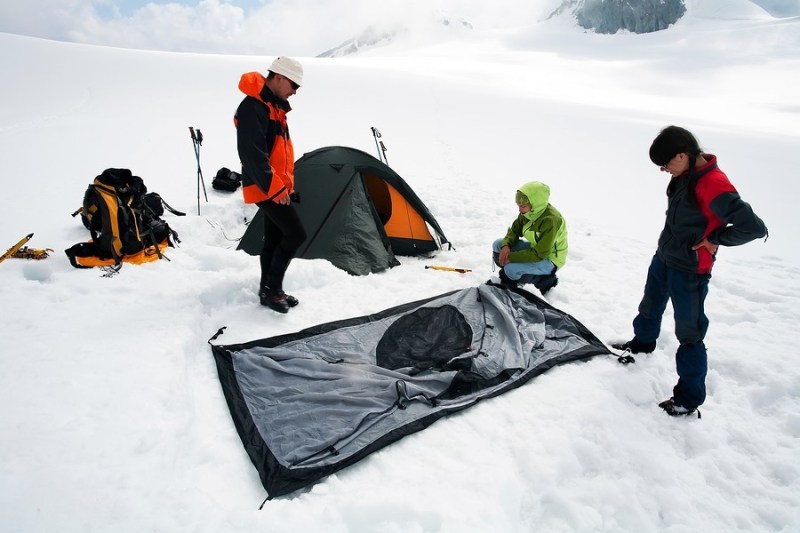
When considering sleeping bags, you will want to select a bag with a temperature rating that covers the coldest temperature you believe you may encounter. Another good tip from Paul:
Make sure you allow your bag plenty of time to loft or uncompress before you crawl in. This will allow the insulation time to fluff up to its full thickness, and provide maximum warmth. If you have the room to pack it, a sleeping pad is also a great idea, as it provides not only a bit more comfort but also an extra layer insulation between you and the ground.
If you're packing in a stove and fuel make sure you use a cold weather fuel. Most liquid fuels, like white gas, work great in the winter. If you use a canister fuel, make sure it is a blend or multi-fuel suitable for cold weather burning. In addition to your canteen and packed water, you will also likely be boiling water, from melted snow or an open water source, for drinking and other uses. Boiling is a reliable water treatment method as well. Just remember that it requires a significant amount of melted snow, as well as time, to produce any substantive amount of water; keep that in mind when deciding how much stove fuel to pack or if you'll be stopping along the way to refuel and rehydrate yourself.
"My best advice," says Paul, "is to use metal water bottles, not the plastic type. This comes in handy overnight. Boil or heat some water before you go to bed at night. Dump the hot water into your water bottle, slide the water bottle into a thick sock to help maintain its temperature and throw it into your sleeping bag. You have a small radiant heat source in your sleeping bag that will often be warm for hours, making your overnight more comfortable."
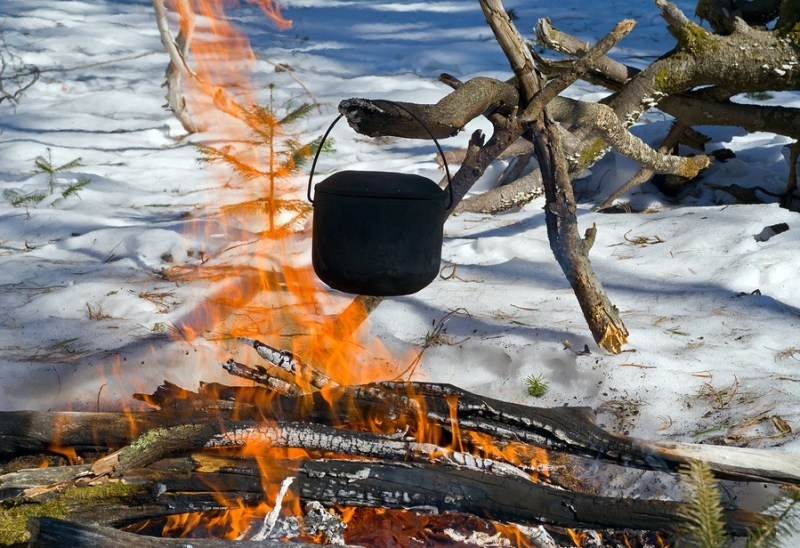
With clothing, staying dry and warm is critical to your enjoyment and possibly even your survival. The traditional layering system is tried and true, with a light base layer of wool or synthetic material (avoid cotton) to wick perspiration away from your skin, at least one insulating mid-layer, and an outer shell layer to protect you from the elements. There are a number of synthetic and natural materials that vary in quality, thickness and durability that can serve you well here.
Paul generally advises taking at least two sets of clothing, one for hiking and one for wearing in camp. Most experienced woodsmen know that wool maintains its natural insulating properties even when wet, but wool can also take a long time to dry. There are a variety of synthetics on the market that also provide excellent insulation, and they dry more quickly than wool. While wool is naturally antimicrobial, it is not so with all synthetics. You'll need to make sure that your synthetic choices are antimicrobial in order to lessen the unpleasant odors that sweating produces.
Remember, the trick is to simply pay attention to your body and to avoid excessive sweating. Stop and add a layer if you're cold, or remove a layer if you begin to feel damp from sweating.
Those are the basics. With a little planning and preparation you can enjoy camping in the dead of winter as much as you do in summer. Keep an eye out for succeeding articles where we'll discuss winter camping in more depth and detail.
Like what you see here? You can read more great articles by David Smith at his Facebook page, Stumpjack Outdoors.
https://rumble.com/embed/u7gve.v3tsix/
NEXT: TOP 5 FIRE HACKS FOR SURVIVAL SITUATIONS
